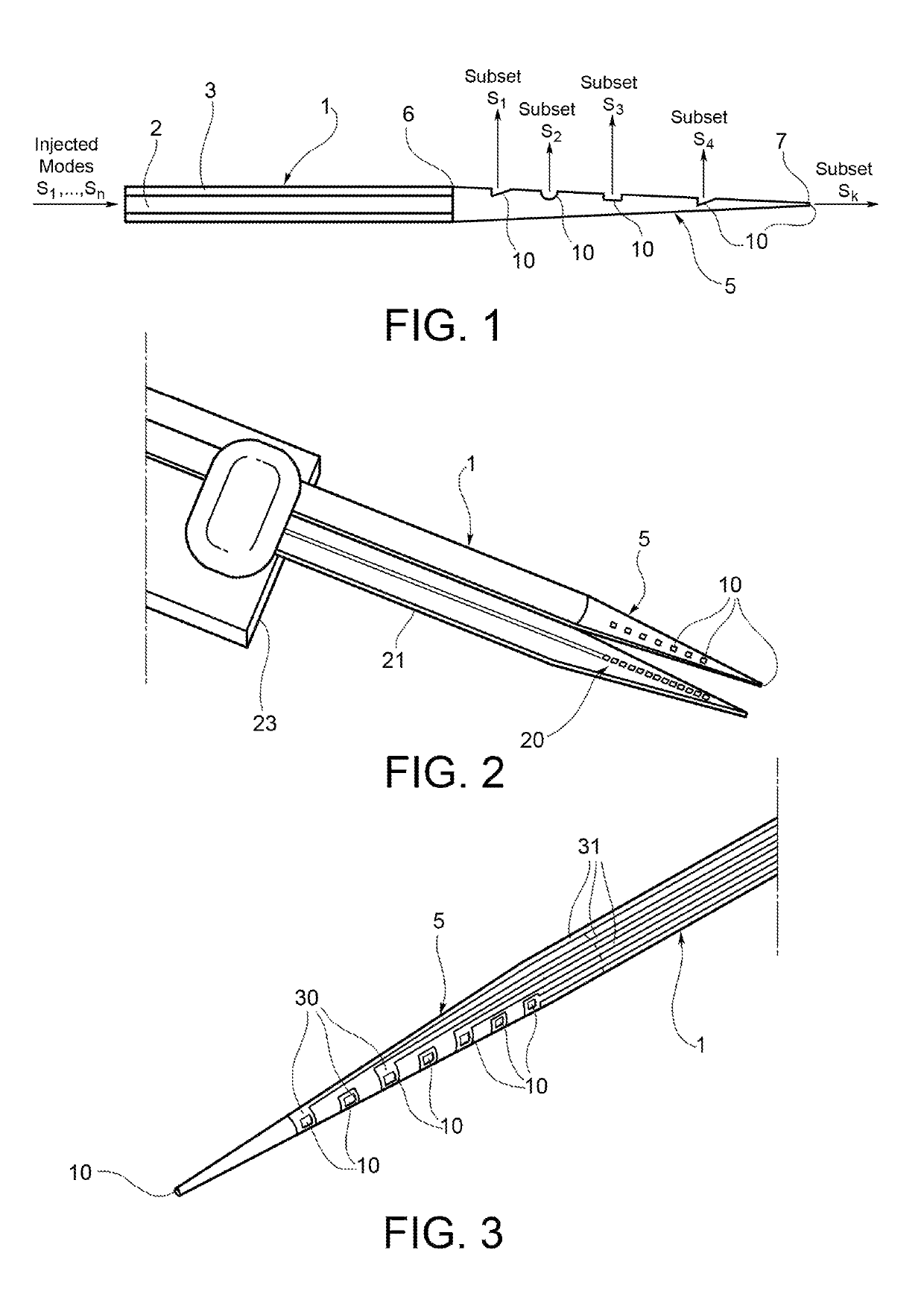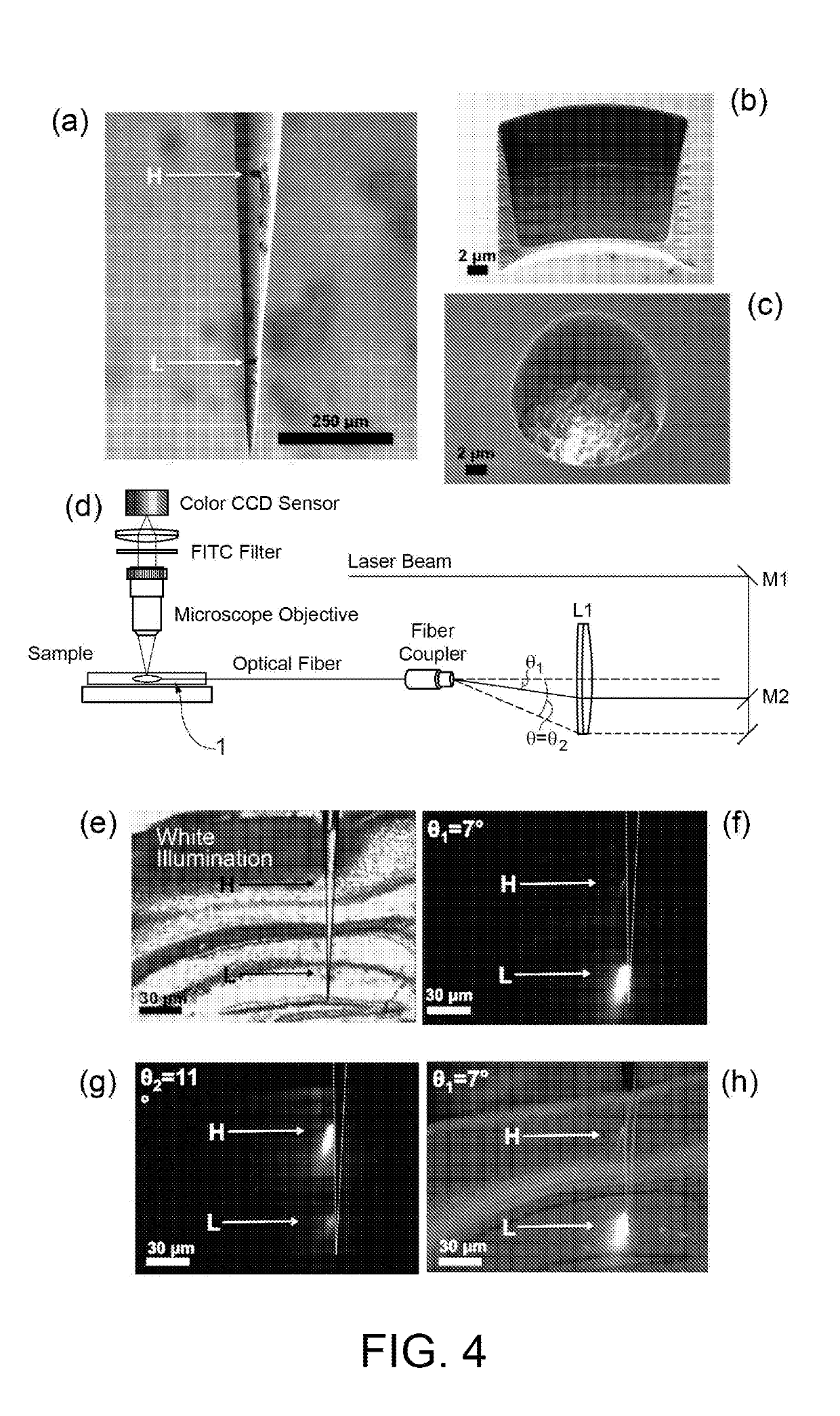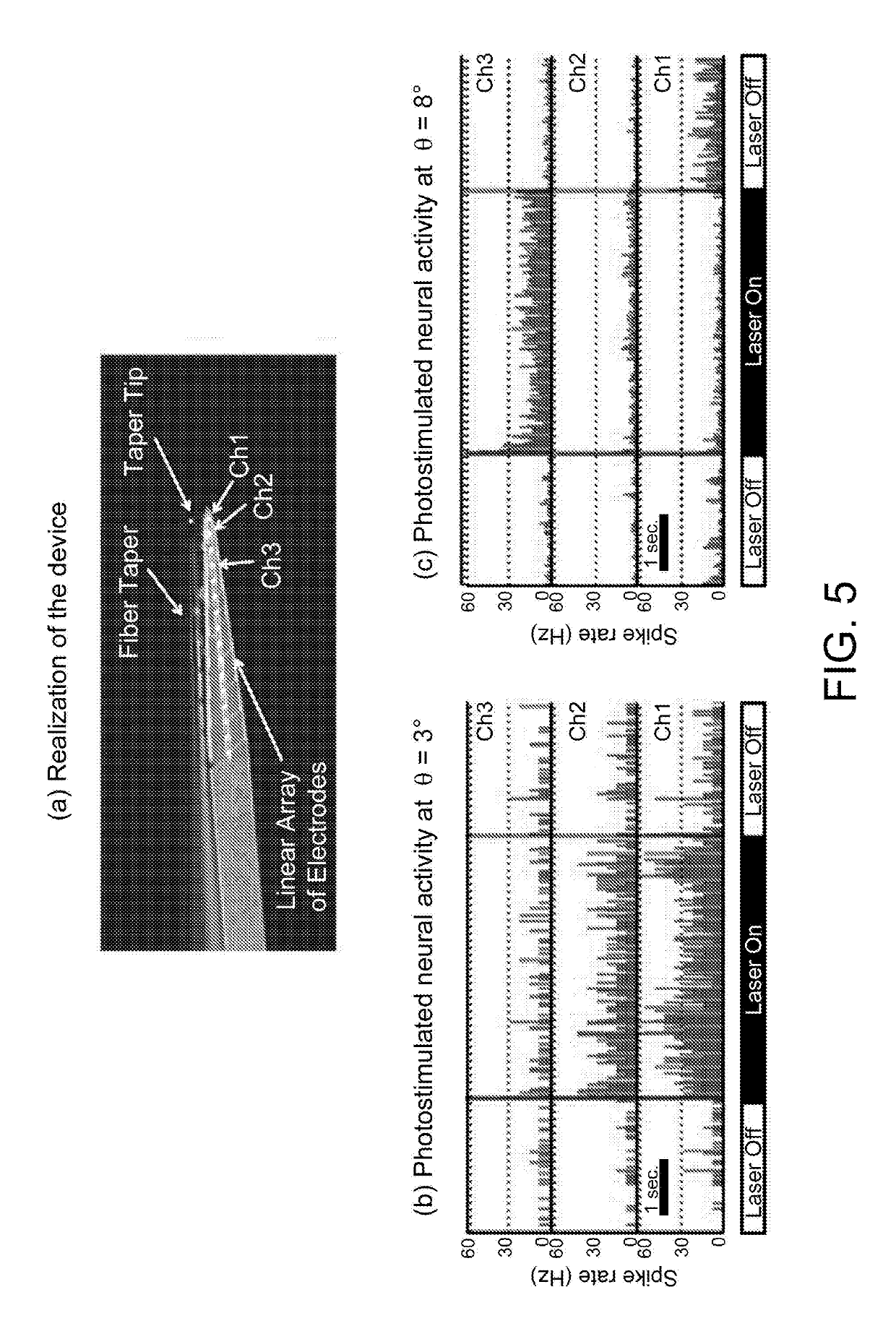Optogenetic tool for multiple and independently addressing of patterned optical windows
a technology of optical windows and optogenetic tools, applied in the field of multi-point light delivery devices, can solve the problems of limited localization of recording sites, poor spatial selectivity of optical excitation, and high spatial resolution of activity detection
- Summary
- Abstract
- Description
- Claims
- Application Information
AI Technical Summary
Benefits of technology
Problems solved by technology
Method used
Image
Examples
Embodiment Construction
[0027]With reference to FIG. 1, a multi-point light delivering device according to the invention is shown. This device comprises a waveguide 1, a section of which is shown in FIG. 1. This waveguide is an optical fiber conventionally comprising a core 2 and a cladding 3. The waveguide 1 extends along a longitudinal axis, between a distal end (not shown in FIG. 1), which is adapted to be coupled to a light source, and a proximal end 5. Light injected by the light source is carried by the waveguide 1 along its longitudinal axis, and out-coupled by the proximal end 5 of the waveguide 1. The proximal end 5 is as tapered region of the waveguide 1, extending between a taper base 6 adjacent to the rest of the waveguide 1, and a taper tip 7. This tapered region has preferably a taper angle between 1° and 10°, preferably between 3° and 6°. The tapered region 5 of the waveguide is coated with a reflective coating. A plurality of optical windows 10 are formed along the tapered region 5.
[0028]Th...
PUM
 Login to View More
Login to View More Abstract
Description
Claims
Application Information
 Login to View More
Login to View More - R&D
- Intellectual Property
- Life Sciences
- Materials
- Tech Scout
- Unparalleled Data Quality
- Higher Quality Content
- 60% Fewer Hallucinations
Browse by: Latest US Patents, China's latest patents, Technical Efficacy Thesaurus, Application Domain, Technology Topic, Popular Technical Reports.
© 2025 PatSnap. All rights reserved.Legal|Privacy policy|Modern Slavery Act Transparency Statement|Sitemap|About US| Contact US: help@patsnap.com



